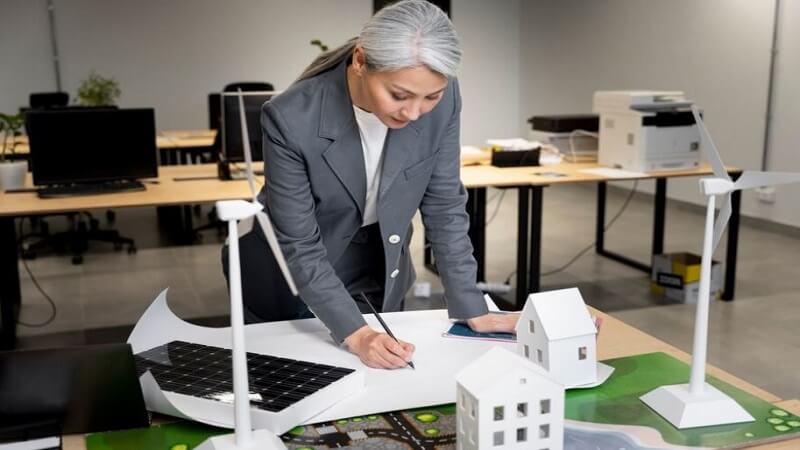When planning urban spaces, architects have a unique opportunity to shape not just buildings but entire ecosystems. They’re the ones who can make a difference in how cities manage resources, especially water. One way they can lead this charge is through the use of submersible pumps. These pumps are an essential component in efficient water management systems, especially in urban areas where water scarcity and sustainability are growing concerns. By integrating submersible pumps into the design of buildings and infrastructure, architects can significantly reduce water waste and improve the overall sustainability of their projects.
The Role of Submersible Pumps in Urban Infrastructure
Submersible pumps operate differently from traditional water pumps. Instead of being installed above ground, these pumps are submerged in the water they are meant to move. This design makes them highly efficient, as the pump doesn’t need to expend extra energy to lift water from a lower level to a higher one.
This efficiency is critical in urban settings where every drop of water and watt of energy counts. For example, in a recent project in Los Angeles, architects were able to reduce water usage by 15% by incorporating submersible pumps into the design of a new residential complex. These pumps were used to recycle greywater for landscaping and other non-potable uses, reducing the need for fresh water and helping the city meet its sustainability goals.
Real-Life Example: Water Management in Action
Let’s dive into a real-life example of how submersible pumps are making a difference in urban planning. In New York City, a major redevelopment project in Brooklyn faced a significant challenge: managing stormwater runoff in a densely populated area. The solution? Submersible pumps.
By installing a series of these pumps in the underground infrastructure, the project was able to efficiently move stormwater into holding tanks, where it could be treated and reused. This approach not only prevented flooding but also provided a sustainable source of water for the project’s green spaces. It’s a great example of how architects and engineers can work together to solve complex urban problems with innovative technology.
Why Submersible Pumps Are Ideal for Urban Use
Submersible pumps are particularly well-suited for urban environments for several reasons:
- Quiet Operation: Since they operate underwater, submersible pumps produce very little noise, making them ideal for use in residential areas where noise pollution is a concern.
- Reliability: These pumps are less prone to mechanical issues because they’re protected from the elements, unlike surface pumps that can be affected by weather conditions.
- Versatility: Submersible pumps can be used in a variety of applications, from managing stormwater to recycling greywater to providing potable water in areas where fresh water is scarce.
How Architects Can Incorporate Submersible Pumps into Their Designs
Architects looking to incorporate submersible pumps into their designs should start by considering the specific water needs of their project. Are they looking to manage stormwater, recycle greywater, or provide potable water?
Once they’ve identified the need, they can work with engineers to design a system that integrates submersible pumps in the most efficient and effective way possible. For instance, in a recent project in San Francisco, architects designed a rainwater harvesting system that used submersible pumps to move water from rooftop collection tanks to a central storage facility. This water was then filtered and used for irrigation, reducing the building’s reliance on the city’s water supply and helping to meet the project’s sustainability goals.
The Future of Submersible Pumps in Urban Planning
As cities continue to grow and the demand for sustainable infrastructure increases, the use of submersible pumps is likely to become even more widespread. Architects who embrace this technology now will be at the forefront of a movement that’s changing the way we think about water management in urban environments.
Whether it’s reducing water waste, preventing flooding, or providing a reliable source of potable water, submersible pumps have a vital role to play in the cities of the future. By integrating these pumps into their designs, architects can not only meet the needs of their clients but also contribute to the broader goal of creating more sustainable, resilient cities.
FAQs
1. How Do Submersible Pumps Save Energy in Urban Settings?
Submersible pumps are submerged in water, which means they don’t have to expend extra energy lifting water from a lower level to a higher one. This efficient design saves energy, making them ideal for urban use.
2. Are Submersible Pumps Noisy?
No, submersible pumps operate underwater, which significantly reduces noise pollution, making them perfect for residential areas where noise is a concern.
3. Can Submersible Pumps Be Used for Recycling Greywater?
Yes, submersible pumps are excellent for recycling greywater, making them ideal for sustainable water management systems in urban environments.
4. What Is the Lifespan of a Submersible Pump?
With proper maintenance, submersible pumps can last up to 15 years or more, making them a reliable solution for long-term urban planning projects.
Conclusion: The Architect’s Role in Water Sustainability
Architects have a unique role to play in promoting water sustainability in urban environments. By incorporating submersible pumps into their designs, they can create buildings and infrastructure that are more efficient, reliable, and sustainable. Whether it’s through managing stormwater, recycling greywater, or providing potable water, these pumps offer a versatile solution to some of the most pressing challenges facing our cities today.
For architects looking to lead the charge in sustainable urban planning, submersible pumps are a powerful tool that can help them achieve their goals. So, the next time you’re planning a project, consider how these pumps can make your design not just functional, but also forward-thinking.
Key Takeaways:
- Submersible pumps are efficient and ideal for urban settings.
- They play a crucial role in managing stormwater and recycling greywater.
- Architects who incorporate submersible pumps in their designs contribute to a more sustainable future.
